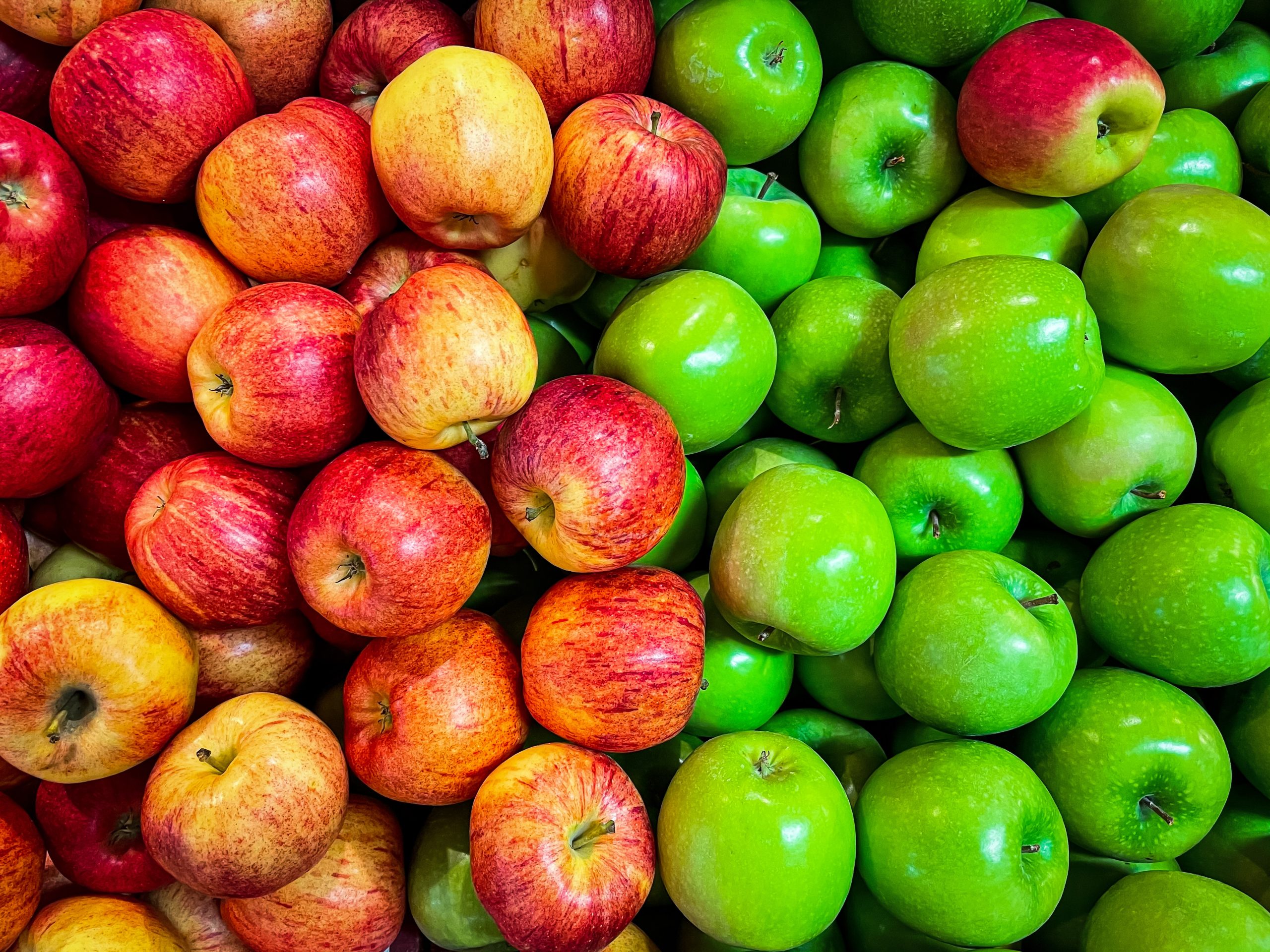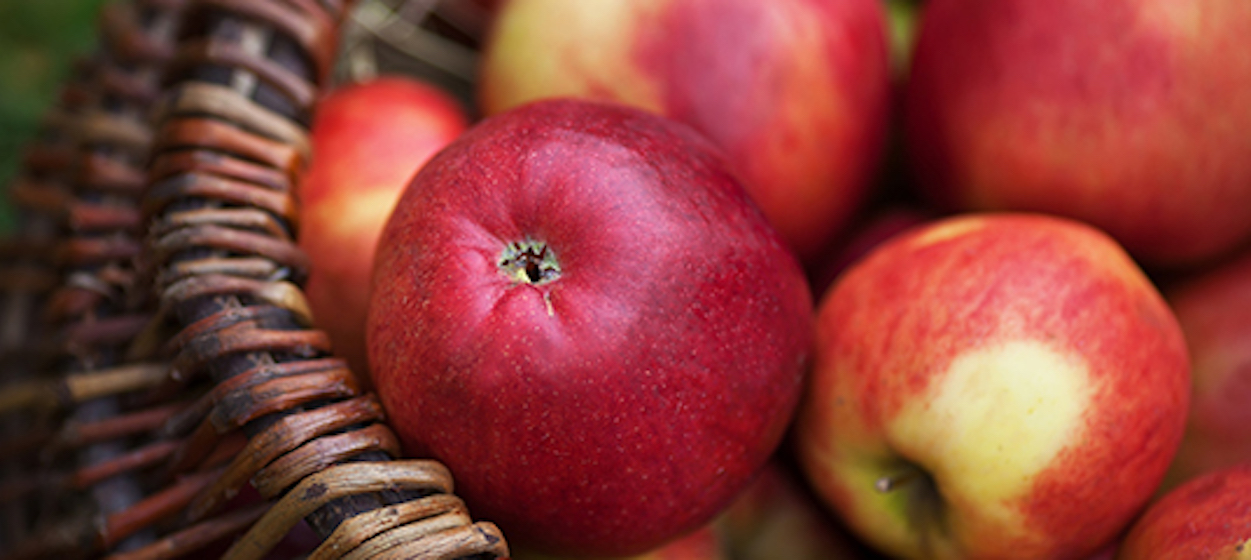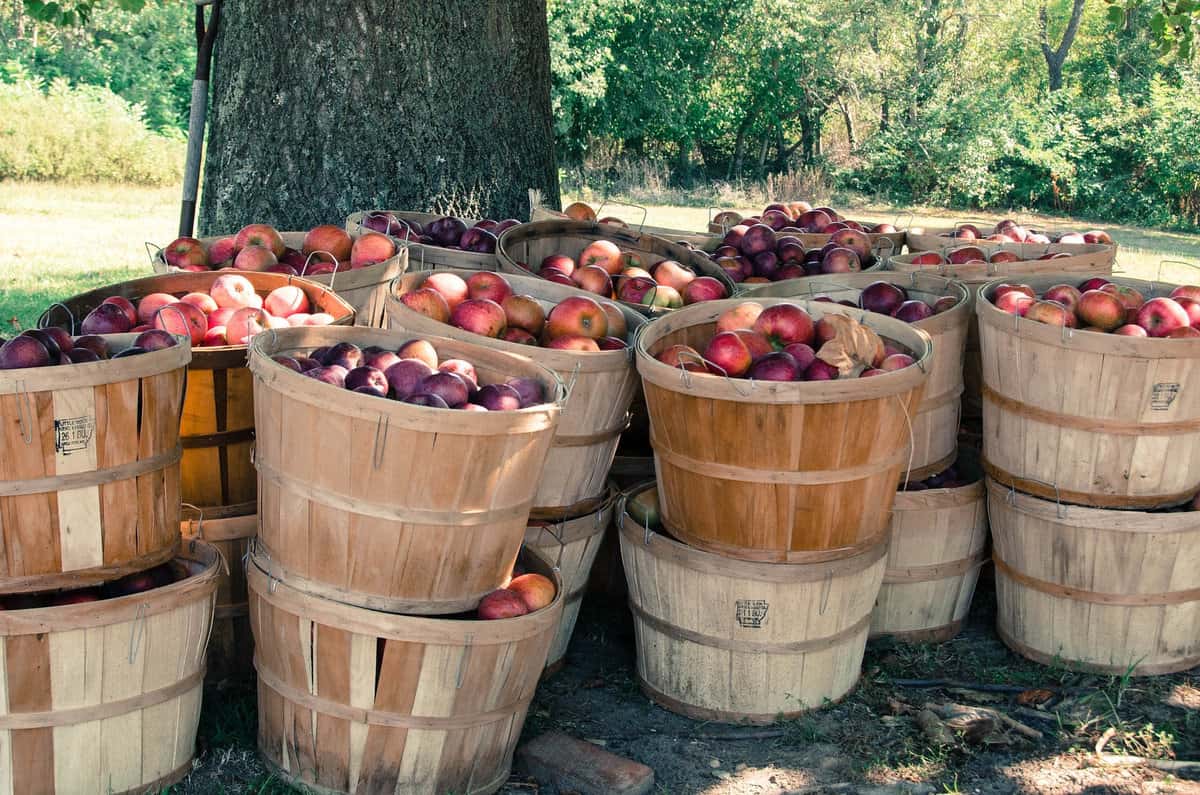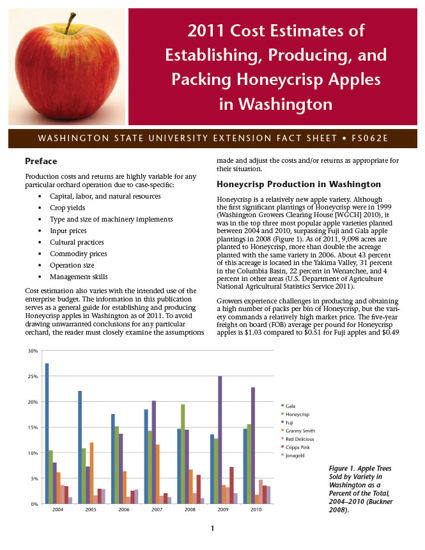The Basics Of Produce Measurements

When it comes to buying and selling produce, accurate measurements are essential. Understanding how to measure quantities of fruits, such as apples, is crucial for farmers, distributors, and consumers alike. Common measurements for fruits like apples include bushels, pecks, pounds, cups, and quarts. Each measurement has its own purpose and conversion factors, ensuring consistency and clarity in the market. Accurate measurements not only impact the quality and value of fruits but also play a role in efficient handling and storage techniques. By understanding the basics of produce measurements, individuals can make informed decisions and maximize their apple buying and selling experience.
Overview Of Common Measurements For Fruits Like Apples
Common measurements for fruits like apples include bushels, pecks, pounds, cups, and quarts. These measurements are used to determine the quantity of apples and other fruits being bought, sold, or used in recipes.
Bushels are the most common measurement for large quantities of apples, especially in commercial settings. A bushel is equivalent to about 42 to 48 pounds of apples. Pecks and pounds are also used to measure smaller quantities of apples, typically for personal use or smaller-scale purchases.
Cups and quarts are more commonly used in recipes when measuring out specific amounts of chopped or sliced apples. These measurements ensure consistency in the final dish and allow for accurate portion control.
Understanding Weight Measurements For Bushels Of Produce
When it comes to measuring bushels of produce like apples, it’s important to understand the weight measurements involved. A bushel of apples typically weighs between 42 to 48 pounds. This measurement helps determine the quantity of apples being bought or sold. Additionally, it’s useful to know that one peck of apples is equal to about 10 to 12 pounds. By understanding these weight measurements, consumers and farmers can accurately assess the amount of produce they have or need. This knowledge is vital for proper handling, storage, and efficient utilization of bushels of apples.
Importance Of Accurate Measurements

Accurate measurements play a crucial role in the quality and efficiency of the produce industry, particularly when dealing with bushels of apples. Having precise measurements ensures that buyers and sellers can accurately assess the quantity of apples being exchanged. This knowledge helps in making informed decisions about pricing, storage, and distribution. Accurate measurements also enable farmers to plan their harvests and manage their inventory effectively. Additionally, consumers benefit from accurate measurements as it ensures they receive the correct amount of produce they are purchasing. Overall, accurate measurements are essential for maintaining transparency and fairness in the produce market.
How Accurate Measurements Impact The Quality Of Fruits
Accurate measurements play a crucial role in ensuring the quality of fruits. When fruits are properly measured, it becomes easier to assess their size, weight, and overall condition. This information is vital for determining their freshness, ripeness, and suitability for consumption or sale. Accurate measurements help identify any variations in size or weight, allowing for better sorting and grading of the fruits. This ensures that only high-quality fruits meet the desired standards. Additionally, precise measurements help in estimating shelf life, managing inventory, and ensuring proper packaging and transport of the fruits, ultimately leading to better overall quality.
Benefits Of Precise Measuring When Dealing With Bushels Of Apples
Precise measuring when dealing with bushels of apples offers several benefits.
- Accurate pricing: Precise measurements allow farmers and sellers to determine the exact quantity of apples in a bushel, ensuring fair pricing for both buyers and sellers.
- Consistency in packaging: Precise measurements help ensure that bushels of apples have consistent weights and sizes, providing customers with uniform packaging and reducing waste.
- Quality control: By accurately measuring bushels of apples, producers can identify any variations in size and weight, allowing for better sorting and grading. This helps ensure that only high-quality apples meet the desired standards.
- Efficient inventory management: Precise measurements help in estimating the number of bushels available, allowing farmers to manage their inventory effectively and plan for future harvests.
In summary, precise measuring when dealing with bushels of apples leads to fair pricing, consistent packaging, better quality control, and efficient inventory management.
Determining The Quantity Of Apples In A Bushel

Determining the quantity of apples in a bushel can vary depending on several factors such as the size and type of apples. Generally, a bushel of apples contains approximately 125 apples. However, it is essential to note that different apple varieties may have slightly different sizes and weights. To calculate the number of apples in a bushel, it is recommended to refer to industry standards or consult with local farmers or experts. By understanding these measurements, consumers and sellers can ensure they are receiving the correct quantity of apples in a bushel.
Factors That Affect The Number Of Apples In A Bushel
Several factors can affect the number of apples in a bushel. These include the size of the apples and the type of apple variety. Larger apples will take up more space in the bushel, resulting in a smaller quantity. Additionally, different apple varieties have varying sizes and weights, which can affect the number of apples in a bushel. For example, if the bushel is filled with larger-sized apples, the quantity may be lower compared to bushels filled with smaller-sized apples. It is important to consider these factors when determining the quantity of apples in a bushel.
Calculating The Amount Of Apples Based On Different Sizes And Types
When calculating the amount of apples based on different sizes and types, it is important to consider the variations in weight and size. Smaller apples will generally take up less space in a bushel, allowing for a larger quantity. On the other hand, larger apples will take up more space, resulting in a smaller quantity. Additionally, different types of apples have varying sizes and weights. Some varieties may have smaller apples that can fit more in a bushel, while others may have larger apples that will reduce the overall quantity. It is crucial to consider these factors when determining the number of apples needed for a specific recipe or purpose.
Comparison Of Various Apple Varieties

When it comes to apples, there is a wide range of varieties to choose from, each offering its own distinct qualities. In a bushel, you are likely to find a mix of different apple varieties. Some common varieties include Gala, Pink Lady, Honeycrisp, and Granny Smith. Gala apples are known for their sweet and crisp flavor, while Pink Lady apples have a tangy and sweet taste. Honeycrisp apples are both sweet and tart, and Granny Smith apples are famously tart and juicy. Each variety brings its own unique taste and texture, adding depth and variety to your culinary adventures.
Different Apple Varieties Commonly Found In A Bushel
A bushel of apples often contains a mix of different apple varieties, providing a delightful assortment of flavors and textures. Some common apple varieties you may find in a bushel include Gala, Pink Lady, Honeycrisp, and Granny Smith. Gala apples are known for their sweet and crisp flavor, while Pink Lady apples offer a tangy and sweet taste. Honeycrisp apples are both sweet and tart, and Granny Smith apples are famously tart and juicy. The combination of these different varieties adds depth and variety to your culinary adventures with apples.
Understanding The Differences In Size, Weight, And Taste
When it comes to apples in a bushel, there can be noticeable variations in size, weight, and taste. Different apple varieties have unique characteristics that set them apart. Some apples are smaller and lighter, while others are larger and heavier. The size and weight of an apple can affect its texture and juiciness. Additionally, each apple variety has its own distinct flavor profile, ranging from sweet and crisp to tangy and tart. Exploring the different sizes, weights, and tastes of apples in a bushel allows for a diverse and flavorful culinary experience.
Efficient Handling And Storage Techniques

Efficient handling and storage techniques are crucial for maintaining the quality and freshness of apples in a bushel. Proper handling involves delicately placing the apples in baskets or boxes to prevent bruising or damage. It is important to store the bushel of apples in a cool, dry place to extend their shelf life. Additionally, sorting the apples by ripeness and removing any damaged or spoiled ones helps prevent the spread of decay. Regularly inspecting the apples and removing any that show signs of spoilage is essential for preserving the overall quality of the bushel.
Best Practices For Handling A Bushel Of Apples
When handling a bushel of apples, it is important to follow some best practices to ensure their quality and minimize damage. Here are some tips:
- Handle with care: Gently place the apples in baskets or boxes to prevent bruising or damage.
- Sort and inspect: Sort the apples by ripeness and remove any damaged or spoiled ones to prevent the spread of decay. Regularly inspect the bushel and remove any apples showing signs of spoilage.
- Proper storage: Store the bushel of apples in a cool, dry place to extend their shelf life. Avoid storing them near ethylene-producing fruits or vegetables, as this can accelerate ripening.
- Avoid overcrowding: Do not tightly pack the apples together, as this can cause them to bruise. Leave some space between the apples for air circulation.
By following these best practices, you can ensure the longevity and freshness of the apples in the bushel.
Tips For Storing Apples To Maintain Freshness And Quality
When it comes to storing apples, there are a few tips to keep in mind in order to maintain their freshness and quality. First, choose apples that are free from bruises or damage for long-term storage. It’s also important to store them in a cool and dark place, such as the refrigerator’s crisper drawer, to slow down the ripening process. Additionally, avoid storing apples next to other fruits and vegetables, as they produce ethylene gas which can accelerate ripening. By following these tips, you can ensure that your apples stay fresh and delicious for longer periods of time.
Conclusion

In conclusion, understanding produce measurements, especially when it comes to apples in a bushel, is essential for both consumers and farmers. Accurate measurements play a significant role in determining the quality of fruits and ensuring efficient handling and storage techniques. By understanding the quantity of apples in a bushel and the differences in varieties, individuals can make informed choices. Proper handling and storage of apples can help maintain their freshness and quality for longer periods. Overall, a clear understanding of produce measurements is crucial for a successful apple harvesting and distribution process.
Summary Of Key Points About Understanding Produce Measurements
Understanding produce measurements, particularly when it comes to apples in a bushel, is crucial for consumers and farmers alike. Accurate measurements play a significant role in determining fruit quality and ensuring efficient handling and storage. Factors such as apple variety, size, and weight can affect the quantity of apples in a bushel. It is important to calculate the amount of apples based on these factors to make informed choices. Efficient handling and storage techniques are also essential in maintaining the freshness and quality of apples for longer periods. Overall, a clear understanding of produce measurements is essential for successful apple harvesting and distribution processes.
Practical Applications For Consumers And Farmers Imagen Editorial
Practical applications of understanding produce measurements, particularly for apples in a bushel, are beneficial for both consumers and farmers. For consumers, accurate measurements can help in making informed choices and ensuring they get the desired quantity of apples. It also assists in meal planning and grocery shopping. Farmers, on the other hand, rely on precise measurements to determine yields, set prices, and manage their inventory effectively. By understanding produce measurements, consumers and farmers can optimize their decision-making processes, ensuring satisfaction and efficiency in apple harvesting and distribution.
FAQ About “apples In A Bushel: Understanding Produce Measurements”
Q: What is a bushel when it comes to measuring produce?
A: A bushel is a unit of volume used to measure produce, typically fruits and vegetables. It is equivalent to 4 pecks or 8 gallons.
Q: How many apples are in a bushel?
A: The number of apples in a bushel can vary depending on the size of the apples. On average, a bushel of apples contains about 126 medium-sized apples.
Q: How does a bushel relate to other common produce measurements?
A: A bushel is equivalent to 32 quarts or 64 pints. It is a larger quantity compared to a peck, which is equivalent to 8 quarts.
Q: Is there a standard weight for a bushel of produce?
A: The weight of a bushel can vary depending on the type of produce. For apples, a bushel typically weighs around 42-48 pounds.
Q: Why is understanding produce measurements important?
A: Understanding produce measurements is essential for both buyers and sellers to ensure accurate transactions and proper portioning. It also helps in meal planning and recipe scaling.

Bistro La Casona is a charming and vibrant culinary destination located at Calle Arenales 222, nestled between Murillo and Aroma in the heart of Casco Viejo/Centro Histórico, Santa Cruz de la Sierra, Bolivia. Our story is one of passion, creativity, and a deep love for exceptional dining experiences. Bistro La Casona has carved out a niche for itself as a beacon of culinary excellence in the heart of the historical center of Santa Cruz de la Sierra. Our journey began with a simple idea – to create a space where food, ambiance, and hospitality come together to offer an unforgettable experience.